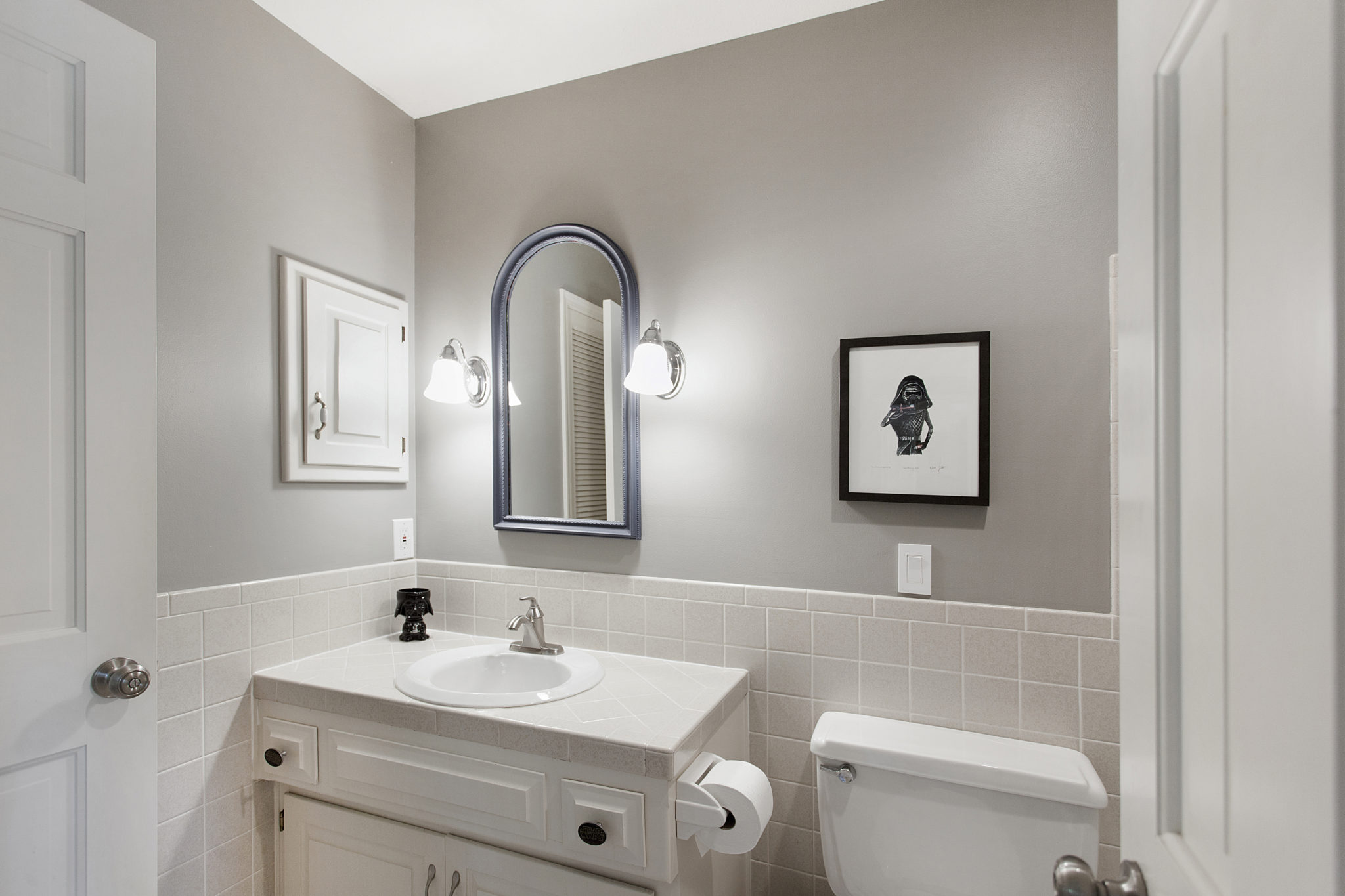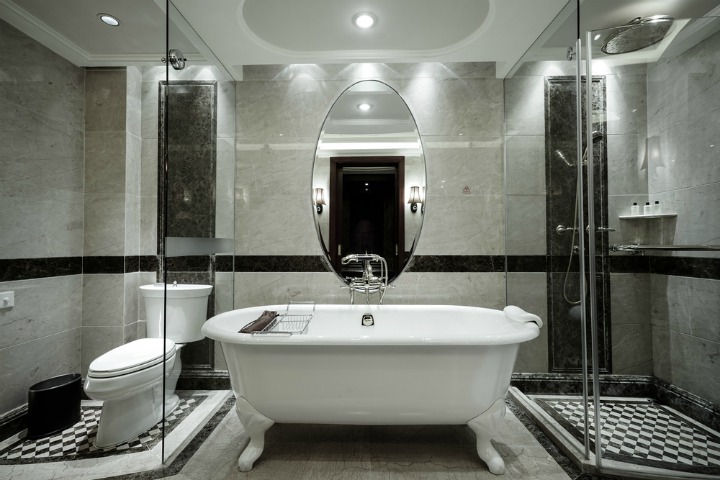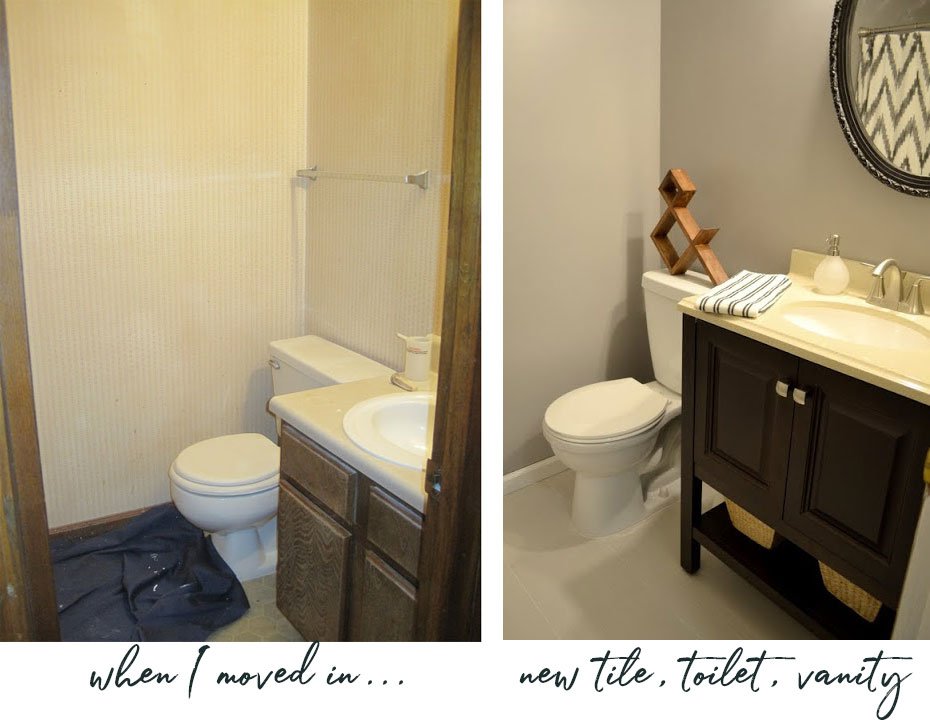Design Considerations for No-Window Bathrooms

Designing a bathroom without natural light presents unique challenges, requiring careful consideration of artificial lighting, spatial perception, and material choices to create a welcoming and functional space.
Artificial Lighting for No-Window Bathrooms
The absence of natural light necessitates strategic artificial lighting to illuminate the bathroom effectively and create a desired ambiance.
- Layered Lighting: Employing a combination of ambient, task, and accent lighting provides versatility and enhances the functionality of the bathroom. Ambient lighting, typically provided by overhead fixtures, illuminates the entire space, while task lighting, such as vanity lights, focuses on specific areas like the sink or mirror, ensuring adequate visibility for grooming activities. Accent lighting, often used to highlight architectural features or artwork, adds visual interest and depth to the space.
- Light Temperature: Choosing the right light temperature, measured in Kelvin (K), is crucial for creating the desired atmosphere. Cool white light (4000K-6500K) is ideal for task lighting as it provides bright, clear illumination, while warm white light (2700K-3000K) creates a more inviting and relaxing ambiance, suitable for ambient lighting.
- Dimmable Lighting: Incorporating dimmable lighting fixtures offers flexibility to adjust the brightness level according to the time of day or mood. This allows for a brighter and more focused light for daytime use and a softer, more relaxing atmosphere in the evening.
- Mirrors and Reflective Surfaces: Mirrors play a vital role in enhancing the perceived brightness of a windowless bathroom. Strategically placed mirrors can reflect existing light sources, multiplying their effect and creating an illusion of greater spaciousness. Similarly, incorporating reflective surfaces, such as polished tiles or chrome fixtures, can further amplify light and enhance the overall brightness of the space.
Creating a Sense of Spaciousness
Windowless bathrooms can feel confined, but employing design strategies can create an illusion of openness and spaciousness.
- Light Colors: Utilizing a palette of light colors, such as white, cream, or pastel shades, on walls, ceilings, and flooring can reflect light and visually expand the space. Lighter colors also create a sense of airiness and enhance the perceived brightness of the bathroom.
- Minimalist Design: A minimalist design approach, characterized by clean lines, simple forms, and a limited number of decorative elements, can create a sense of order and spaciousness. This approach emphasizes functionality and allows light to flow freely through the space, minimizing visual clutter.
- Open Shower Design: Opting for an open shower design, without a door or enclosure, can visually expand the bathroom space, creating a seamless flow between the shower area and the rest of the bathroom.
Materials and Finishes
The choice of materials and finishes can significantly impact the ambiance and brightness of a windowless bathroom.
- Glossy Surfaces: Incorporating glossy surfaces, such as polished tiles, glass, or chrome fixtures, can reflect light and create a brighter, more vibrant atmosphere. These surfaces enhance the perceived spaciousness of the bathroom and amplify the effect of artificial lighting.
- Light-Colored Flooring: Choosing light-colored flooring materials, such as white or light gray tiles, can visually expand the space and enhance the perceived brightness of the bathroom.
Ventilation and Moisture Control: No Window Bathroom Design

A windowless bathroom presents unique challenges in maintaining a healthy and comfortable environment. The lack of natural ventilation necessitates a robust system to manage moisture, prevent mold growth, and ensure proper air circulation.
Exhaust Fans
Proper ventilation is crucial in a windowless bathroom to prevent the buildup of moisture and the subsequent growth of mold and mildew. Exhaust fans are the primary ventilation system for these bathrooms, effectively removing moisture-laden air and replacing it with fresh air.
- Types of Exhaust Fans: There are various types of exhaust fans available, each with its unique features and capabilities.
- Standard Exhaust Fans: These are the most common type, typically powered by a single motor and designed to remove air from a single room. They are relatively inexpensive and offer basic ventilation.
- Inline Exhaust Fans: These fans are installed within the ductwork and are often more powerful than standard fans. They are particularly useful for larger bathrooms or bathrooms with multiple sources of moisture.
- Humidity-Sensing Exhaust Fans: These fans are equipped with sensors that automatically turn the fan on when humidity levels reach a certain threshold. This ensures efficient ventilation and prevents unnecessary energy consumption.
- Fan Size and CFM: The size and power of the exhaust fan are crucial factors in ensuring adequate ventilation. The fan’s performance is measured in cubic feet per minute (CFM), which indicates the volume of air the fan can move per minute. A bathroom with a larger area or more moisture sources requires a fan with a higher CFM rating.
- Proper Installation: Proper installation is essential for optimal fan performance. The fan should be installed according to the manufacturer’s instructions, ensuring that the ductwork is sealed and the fan is properly vented to the exterior. A poorly installed fan can lead to reduced efficiency and potential problems with moisture buildup.
Moisture-Resistant Materials
The use of moisture-resistant materials is crucial in preventing mold and mildew growth in a windowless bathroom. These materials are designed to resist the effects of moisture and humidity, providing a barrier against mold and mildew spores.
- Walls and Ceilings: Moisture-resistant drywall, tile, and waterproof paint are commonly used for walls and ceilings in windowless bathrooms. These materials prevent water penetration and provide a smooth, easy-to-clean surface.
- Flooring: Waterproof flooring options, such as tile, vinyl, and engineered wood, are recommended for windowless bathrooms. These materials are resistant to moisture and water damage, making them ideal for high-humidity environments.
- Countertops and Vanities: Solid surface countertops, such as quartz and granite, are highly resistant to moisture and stains. These materials are durable, easy to clean, and offer a stylish look for the bathroom.
Maintaining a Healthy Bathroom Environment
Maintaining a healthy and comfortable environment in a windowless bathroom requires a combination of proper ventilation, moisture control, and regular cleaning.
- Run the Exhaust Fan: It is essential to run the exhaust fan whenever the bathroom is in use, especially during showers or baths. The fan should be run for at least 15 minutes after each use to ensure adequate ventilation and moisture removal.
- Clean Regularly: Regular cleaning is crucial to prevent the buildup of mold and mildew. This includes cleaning the shower, tub, sink, and toilet regularly, as well as wiping down the walls and floor.
- Minimize Moisture Sources: Reduce the amount of moisture generated in the bathroom by taking shorter showers, using a shower curtain instead of a glass door, and keeping the door open after use to allow air to circulate.
- Monitor Humidity Levels: Use a hygrometer to monitor the humidity levels in the bathroom. The ideal humidity level for a bathroom is between 30% and 50%. If the humidity levels are too high, run the exhaust fan for longer periods or consider using a dehumidifier.
Creating a Relaxing and Inviting Atmosphere

A no-window bathroom can be a haven of tranquility if designed thoughtfully. By focusing on elements that promote relaxation and a sense of openness, you can create a space that feels inviting and rejuvenating.
Color Palette for Serenity, No window bathroom design
Choosing the right color palette is crucial in establishing a calming ambiance. Soft, muted tones create a sense of peace and serenity. Consider these color options:
- Pale blues and greens evoke a sense of water and nature, promoting tranquility and relaxation.
- Neutral tones like beige, gray, and cream provide a calming backdrop and allow other elements to take center stage.
- Soft lavender or light pink can add a touch of warmth and sophistication while maintaining a calming atmosphere.
Textures and Patterns for Visual Interest
While a calming color palette is essential, incorporating textures and patterns adds visual interest and depth to the space. This prevents the bathroom from feeling sterile or monotonous.
- Natural stone tiles provide a tactile and visually appealing surface. Consider incorporating different sizes and shapes for added dimension.
- Wood accents, such as a vanity top or shelves, bring warmth and natural beauty to the space. Choose wood finishes that complement the chosen color palette.
- Textured wallpaper can add visual interest and create a focal point. Opt for patterns that are subtle and calming, avoiding overly bold or busy designs.
Incorporating Nature
Bringing elements of nature into the bathroom can create a sense of connection to the outdoors, even in a windowless space.
- Live plants can add a touch of life and freshness to the bathroom. Choose plants that thrive in low-light conditions, such as snake plants, peace lilies, or spider plants.
- Nature-inspired artwork can bring the beauty of the outdoors into the bathroom. Consider paintings, photographs, or prints featuring landscapes, forests, or water scenes.
- Natural materials, such as bamboo or rattan, can be incorporated into accessories like baskets, shelves, or mirrors, adding a touch of nature and warmth.
Maximizing Storage and Creating a Clutter-Free Space
A clutter-free bathroom is essential for promoting relaxation. Efficient storage solutions help keep the space tidy and organized.
- Built-in shelves and drawers provide ample storage space without taking up valuable floor area.
- Floating shelves can be used to display decorative items or store towels while keeping the space feeling open and airy.
- Towel racks and hooks can be mounted on walls to keep towels organized and off the floor.
No window bathroom design – Designing a bathroom without a window presents unique challenges, especially when it comes to creating a bright and airy space. While natural light is absent, you can still achieve a welcoming ambiance with strategic lighting choices. And don’t forget the ceiling! A well-chosen paint can make a world of difference, especially in a windowless bathroom.
Consider using a high-quality, moisture-resistant, and washable paint like those found on this website , to ensure a durable and cleanable finish. A light and airy paint color can help to visually expand the space and create a sense of openness, even without a window.
Designing a bathroom without a window can be a challenge, but it’s not impossible. You can still create a bright and airy space by using light colors, reflective surfaces, and strategically placed lighting. For inspiration, check out the hgtv designer portfolio bathrooms , where you’ll find many examples of innovative and stylish windowless bathroom designs.
Remember, even without natural light, you can create a bathroom that feels welcoming and spa-like.